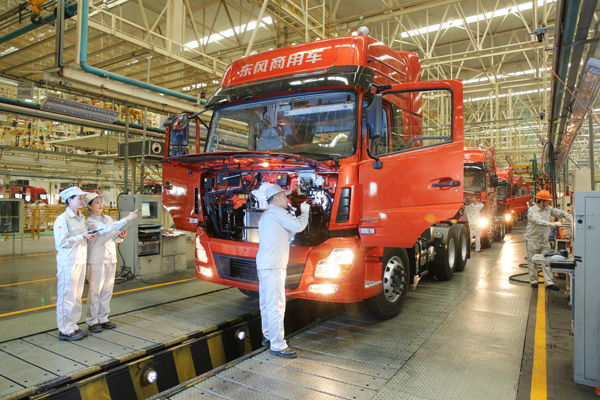|
 |
|
Dongfeng is expected to expand its presence in more overseas markets through its collaboration with Volvo. [Photo provided to China Daily] |
Vehicle manufacturers take the fast track to success in Southeast Asian nations, reports Wang Chao.
Sluggish is not a new word to describe the Chinese truck industry, as the sector has been suffering consecutive drops in the past few years, both in the domestic and overseas markets. But amid the global gloom, Southeast Asia is becoming a silver lining.
Figures from the China Association of Automobile Manufacturers show that during the first three months of the year, Chinese companies exported 78,700 commercial vehicles, including trucks and buses, a decline of 5.3 percent from the same period last year.
But companies that export to Southeast Asia are reporting more impressive results.
Dongfeng Liuzhou Motor Co, a major truck manufacturer based in the Guangxi Zhuang autonomous region, reported that its sales volume in this market has grown more than 100 percent compared with three years ago.
Last year, Liuzhou Motor exported 2,922 vehicles, mostly trucks, with turnover of $101 million. Its major export destinations are Vietnam, the Philippines and Myanmar.
During the first three months of this year, Liuzhou Motor received orders of 1,864 trucks from Vietnam. The company estimates that the first half-year order will easily reach 3,000 units.
DongYang, secretary-general of the CAAM, said the surge is fueled by Southeast Asian countries' huge demand for trucks, which in turn has been generated by their large-scale infrastructure plans.
"Where there is massive infrastructure construction, there is a demand for trucks," he said.
According to Indonesia's long-term economic development plan, for example, the country aims to complete 370 major infrastructure projects, including ports, railways and highways, by 2025.
Analysts said that the "Belt and Road Initiative" by the Chinese government, which focuses on improving connectivity along the historic land and maritime Silk Roads, has further boosted demand, as major infrastructure may be involved.
The process may be further fueled by the establishment of the Asian Infrastructure Investment Bank, which aims to fund infrastructure construction in Asia, Dong said.
Zhou Shaohua, general manager of import and export at Liuzhou Motor, said there are several reasons that the company is making the Southeast Asian market a priority.
